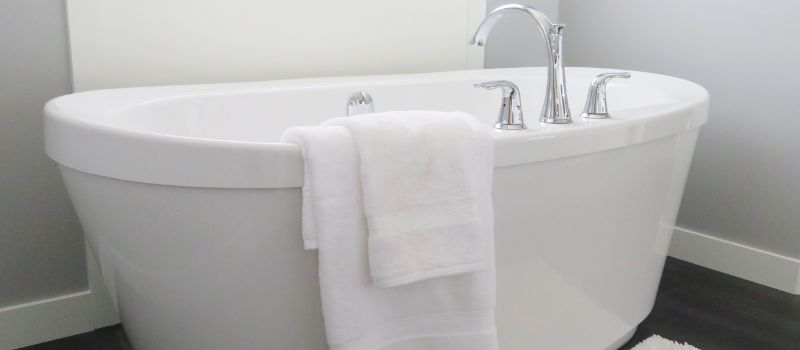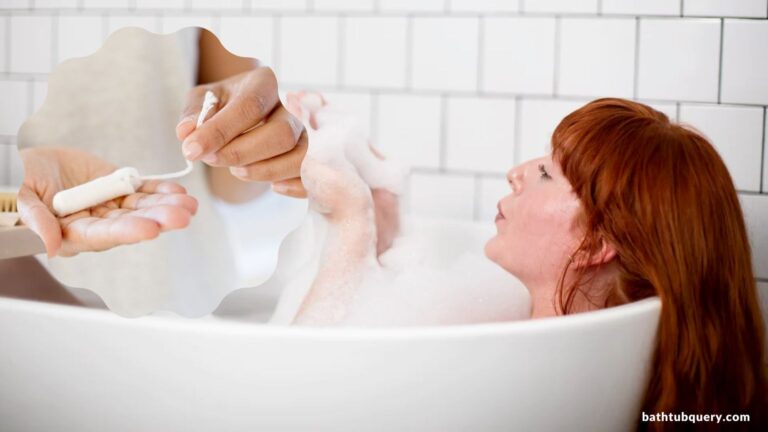Can You Paint A Plastic Bathtub? Revive Your Old Tub
Despite the often robust and enduring design of bathroom fixtures, the passing of years can leave your bathtub looking worn, dull, and unappealing. It’s a common predicament. The bathtub, while still functional, no longer matches the aesthetic of your bathroom.
And in the case of plastic tubs, they can become especially prone to discoloration and scratches over time. The question on many homeowners’ minds then becomes, “Can you paint a plastic bathtub?“
The answer, in short, is yes. But before diving into your renovation project, it’s important to understand why you might want to paint your fiberglass bathtub or plastic bathtub, and how to do it right.
Can You Paint a Plastic Bathtub?
Yes, you certainly can! Painting a plastic bathtub or fiberglass bathtub can dramatically transform your bathroom, saving you the hassle and cost of a complete replacement. It’s a brilliant way to:
- Refresh Your Bathroom’s Look: A new paint job can breathe new life into your tired-looking tub, making it a beautiful, eye-catching feature of your bathroom once again.
- Extend the Bathtub’s Lifespan: By sealing off scratches and minor damage, you can protect the surface of the tub, prolonging its life.
- Save Money: Repainting your bathtub is a cost-effective alternative to a complete bathtub replacement, saving you considerable money.
- Personalize Your Space: With a wide range of bathtub paints available, you can choose the perfect color to match your personal taste and the bathroom’s decor.
Choosing the Right Paint
When it comes to painting a bathtub, not just any paint will do. A bathroom, with its hot showers and frequent use, is a high-moisture environment. This means the paint you select must be able to withstand this humidity without peeling, fading, or bubbling. Let’s explore some great options:
Acrylic Urethane: Durable and Adaptable
Acrylic urethane is a great choice for painting your plastic bathtub due to its exceptional durability and adhesive properties. Dr. James Davis, a renowned chemist specializing in paint formulations, explains that, “Acrylic urethane paints exhibit superior adhesion to plastic surfaces when compared to other paint types. This means they’re less likely to peel or chip over time, even in high-moisture environments like your bathroom.”
Before applying acrylic urethane paint, it’s important to lightly sand the surface of your bathtub. This creates an abrasive texture for the paint to latch onto, further improving the longevity of your paint job. To make your newly painted bathtub last, consider applying a clear acrylic sealant on top. This will add an additional layer of protection against the daily wear and tear of bathroom use.
Epoxy Paint: For a High-Gloss Finish
Next on the list is epoxy paint, known for its high-gloss finish and water-resistant properties. It’s a favored choice among professionals, including Interior Designer Alice Madison, who says, “Epoxy paint has a smooth, shiny finish that not only looks great but also repels water, reducing the risk of water damage.”
However, it’s important to note that epoxy paint can emit strong fumes during application, posing a health risk if not properly ventilated. It is strongly recommended to use this paint in a well-ventilated area and wear a respirator for safety. Despite its minor drawback, the durability and high-shine finish of epoxy paint can significantly improve the look and lifespan of your plastic bathtub.
Appliance Paint: Tough and Resilient
Finally, appliance paint is a specialty paint designed for painting appliances, but it also works incredibly well for plastic bathtubs. This type of paint is engineered to withstand a lot of wear and tear, making it a resilient choice for a frequently used bathroom.
Martin Locke, a seasoned paint contractor, advocates for appliance paint in high-moisture areas. He states, “Appliance paint is incredibly durable and moisture-resistant. It’s formulated to handle the intense conditions appliances are exposed to, making it a solid choice for a plastic bathtub in a bathroom setting.”
When using appliance paint, preparation is key. As with the other options, sanding the surface prior to painting will help the paint adhere better, ensuring a long-lasting and durable finish.
A Step-By-Step Guide to Painting Your Plastic Bathtub

Armed with your paint of choice, you’re ready to tackle the project. Here’s a simple step-by-step guide to painting your plastic bathtub:
- Clean the Tub Thoroughly: Remove all dirt, soap scum, and grime. Then rinse well and allow the tub to dry completely.
- Repair Any Damage: Fill in any scratches or cracks with a waterproof epoxy filler. Sand smooth once dry.
- Lightly Sand the Surface: This creates a better surface for the paint to adhere to. Use a 400-600 grit wet sandpaper.
- Apply a Plastic-Specific Primer: This will ensure optimal paint adhesion. Allow it to dry as per manufacturer’s instructions.
- Apply the Paint: Use a foam roller for even, smooth coverage. Depending on the paint, you may need several coats. Always allow each coat to dry thoroughly before applying the next.
- Apply a Clear Top Coat (Optional): A clear, waterproof sealant can add an additional layer of protection and gloss.
Caring for Your Painted Bathtub
Your newly painted bathtub deserves careful handling to ensure it stays looking new for as long as possible. Here are some tips:
- Avoid Harsh Chemicals: Stick to mild, non-abrasive cleaners to avoid damaging the paint.
- Use a Soft Cloth or Sponge: Hard scrub brushes can scratch the painted surface.
- Dry the Tub After Use: This minimizes water spots and potential damage to the paint.
FAQs
Can you paint a fiberglass or plastic bathtub?
Yes, you can paint both fiberglass and plastic bathtubs. It’s all about prepping the surface correctly and using the right kind of paint and primer to ensure a long-lasting finish.
Can you change the color of a plastic bathtub?
Yes, You can change the color of a plastic bathtub using the right type of paint and procedure. It’s a solid way to give your bath a new lease on life.
What do you use to paint a plastic bathtub?
When painting a plastic bathtub, you’ll need a high-adhesion primer and a type of paint made specifically for plastics. These can typically be found at home improvement stores.
Can you paint the outside of a plastic bath?
You can paint the outside of a plastic bath, but it’s crucial to use a paint designed for plastic surfaces to ensure proper adhesion.
Key Takeaways
Repainting a plastic bathtub is a cost-effective and doable way to breathe new life into your bathroom. With the right paint, proper preparation, and careful application, you can transform your old, worn tub into a beautiful centerpiece.
Caring for your newly painted tub properly will ensure its longevity, maintaining the beauty of your bathroom. The next time someone asks you, “Can you paint a plastic bathtub?”, you can confidently answer, “Absolutely, and here’s how!”
Read more:

Amanda has been designing and installing bathtubs for over 15 years. She first got interested in the bathtub industry while working as an interior designer right after college. During her years as a designer, Amanda was frustrated by the lack of high-quality, unique bathtub options for her clients. This passion led her to start her own bathtub website in 2009.







